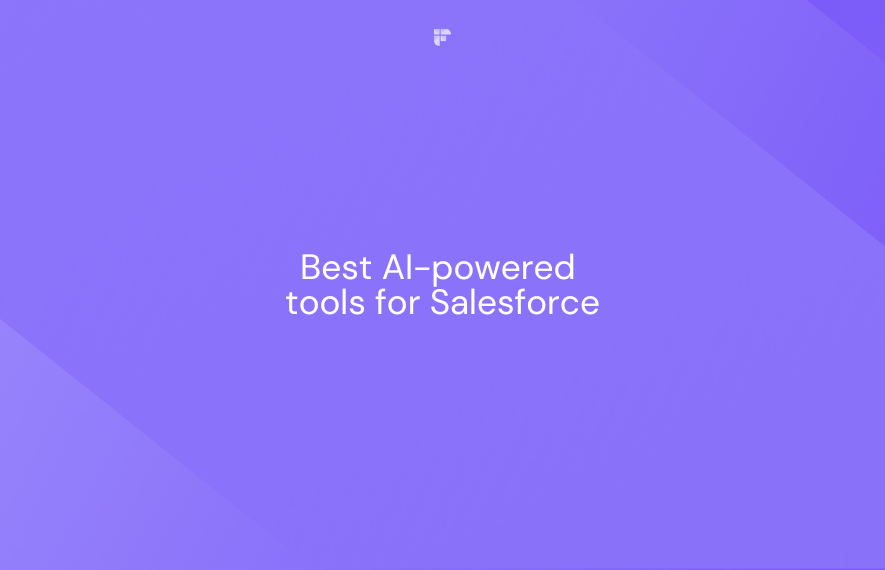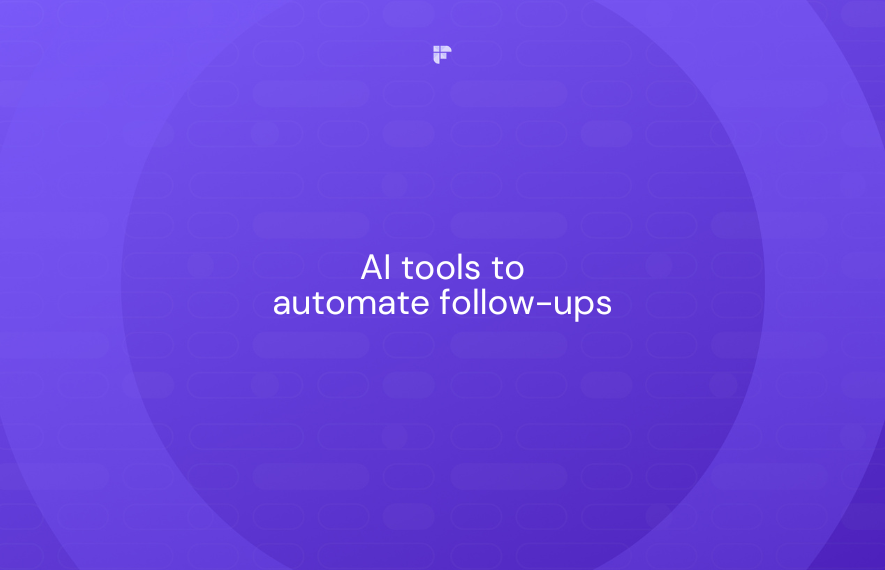Voice recognition technology lets you control your devices by speaking instead of typing or clicking.
For instance, on your phone, just say, "Hey Google, where's the closest coffee shop?" and Google will respond.
This simple example shows how voice recognition software makes tasks quicker and easier.
However, this is just one basic application. The technology has greatly improved since it first appeared about 50 years ago. Now, it's used in many different ways.
If you want to know more about this technology, how it works, and its practical applications, keep reading.
In this blog post, we’ll cover,
- What is Voice Recognition Software?
- How Does Voice Recognition Software Work?
- Top 20 Voice Recognition Software Uses
- Best Voice Recognition Software
What Is Voice Recognition Software?

Voice recognition technology allows computers to understand spoken words, converting them into text or commands without typing.
So, what is voice recognition software?
These apps or programs use voice recognition technology to process speech and perform different tasks.
Voice recognition software is widely used in various applications, including virtual assistants, transcription tools, and speech-to-text systems.
For example, smart assistants like Amazon's Alexa and Apple's Siri respond to voice commands to perform various functions, like setting reminders, playing music, or providing information.
The increasing adoption of such voice-enabled devices is driving the growth of the voice recognition market, which is expected to grow at a compound annual growth rate (CAGR) of 14.9%, reaching $20.25 billion by 2030.
How does voice recognition software work?

Are you wondering, “How does voice recognition software work?” Here’s how:
Voice recognition software operates through automatic speech recognition (ASR). It uses algorithms to interpret spoken language into text.
1. Capture audio
The software first records the audio using a microphone.
2. Pre-process audio
It then cleans up the audio by removing background noise and adjusting the volume.
3. Segment into phonemes
Next, it breaks down the audio into its smallest sound units, called phonemes, using methods like Hidden Markov Models or neural networks.
The hidden Markov model breaks down spoken words into smaller sounds, while neural networks use previous steps to help with the current step.
4. Match phonemes
These phonemes are compared with a vast database of language patterns to identify words and sentences.
5. Output text
Finally, the recognized text is either displayed or used to perform specific actions.
Top 20 voice recognition software uses

1. Virtual assistants
They go by many names—some call them digital assistants, others smart assistants, and some even call them AI assistants.
Don’t let all this diversity confuse you, though — they’re all referring to the same thing. Virtual assistants are one of the most common uses of voice recognition software.
Most of the tech giants have been very invested in the development of voice assistants in the last decade. This is how Google Assistant, Microsoft’s Cortana, and Apple’s Siri have become household names.
According to Microsoft’s 2019 Voice Report, 69% of respondents have used a digital assistant. Most have interacted with them on their phones (72%).
2. Voice-enabled online banking

Banks and FinTech startups have been among the earliest adopters of voice and speech recognition technology. According to some reports, banks in North America allocated over $20 billion in 2017 alone to incorporate voice recognition into their apps and services.
Today, major payment companies like Venmo and PayPal, as well as banks like N26 and Bank of Canada, offer customers the option to process transfers and payments using voice assistants like Siri.
Another notable example, Garanti Bank has launched its own voice-based software. It allows clients to make transfers and pay for services by merely saying, “I need to transfer money,” and mentioning the business's or individual's name.
3. Medical transcription

Recently, medical transcription has become an indispensable part of any doctor’s appointment, which significantly facilitates storing, structuring, and accessing information in patients’ medical records.
There are a myriad of benefits to using digital transcription in medical environments.
- Saves time for physicians by reducing writing during appointments, enabling them to see more patients.
- Ensures essential data is digitally stored and accessible to relevant specialists, meeting legal compliance.
Converting speech to text will have a beneficial effect on a doctor’s workflow and skyrocket their efficiency.

4. Voice biometry

Another impressive development that stems from voice recognition technology is voice biometry. Just like using your fingerprint to unlock your smartphone, vocal biometrics verifies a person's identity through their speech. Instead of typing a password, users may say their name aloud during log-ins.
In Fintech, speech biometrics can authorize transactions to ensure they are genuine and approved by the account owner. Similarly, in healthcare, access to authorized personnel is restricted to maintain patient confidentiality.
Swisscom, one of Switzerland’s biggest telecommunications providers, has recently integrated real-time voice authentication technology into its call centers.
5. Workplace productivity

Voice recognition technology is gradually entering the workplace and has already started helping human resources departments efficiently manage large companies.
Professionals worldwide can utilize virtual assistants and smart speakers to access their human capital management software, like Dayforce. They can submit requests for vacation time, request and cancel meetings, and perform other tasks seamlessly.
Companies like Salesforce already offer integrations that enable customers to interact with their CRM through voice commands instead of typing.
6. Transcribing online meetings

Taking notes during meetings is vital, but doing so manually is impractical due to long meetings and busy schedules. Mistakes are common, and our focus often wanes, leading to incomplete and inaccurate notes.
Thanks to recent breakthroughs in deep learning and artificial intelligence, meeting transcription software like Fireflies can now precisely generate word-for-word representations of spoken conversations.
Fireflies AI is the perfect example of voice recognition in action. It can transcribe conversations, generate comprehensive summaries, and extract actionable insights from the recorded data.
This allows participants to concentrate on discussions without stressing about noting every detail, enhancing productivity and ensuring accurate meeting records.

With Fireflies, you can,
- Automatically transcribe meetings with 95% accuracy in 60+ languages.
- Generate transcripts and subtitles for your podcasts, audio and video
- Get meeting summaries to quickly grasp key points and meeting minutes.
- Use the Smart Search feature to search for keywords, themes, and topics such as action items, dates, times, metrics, questions, and sentiment.
- Turn important parts of calls into shareable soundbite snippets.
- Leave comments, pins, thumbs up or thumbs down at different parts of meetings.
- Automatically create tasks in Asana, Trello, and Monday.com by using voice commands during meetings.
- Send meeting notes to your favorite collaboration apps like Slack, Notion, and Asana.
- Log meeting notes, transcripts, and recordings in your CRM like Salesforce, Hubspot, and more.
- Create a self-updating knowledge base from all your voice conversations.
- Organize meeting recaps by department and make information quickly discoverable.
- Use AskFred to ask any questions about the meeting.
- Integrate more than 50 different video conferencing apps, CRM, diallers, and other apps.
- Set access control for protecting conversations.
The best part is that Fireflies is compatible with all platforms and even offers dedicated Android and iOS apps for mobile access. You can also use the Chrome extension to make it more accessible.
You can start using Fireflies for free with its Forever Free plan. For advanced features, try paid plans starting at just $10 per month. Sign up directly with your Microsoft or Google account and start automatically transcribing your meetings.
💡 Transcribe Your Meetings with Fireflies.ai!
Use Fireflies to record, transcribe, summarize and analyze meetings for better productivity.
7. Hands-free shopping

A recent study published by NPR and Edison Research indicates that over 55% of the individuals surveyed had purchased smart speakers at least once. At the same time, over a quarter said they do it regularly.
Voice ordering and convenience have become successful for many retail businesses. It has generated approximately $2 billion in retail revenue and will increase manifold over the next few years.
8. Customer Service and IVR

Voice recognition plays a crucial role in customer service and is a valuable AI tool. It offers an efficient call center solution that operates round the clock at a lower cost than live representatives.
Key applications include Interactive Voice Response (IVR), which enables customers to navigate services through voice commands. Analytics transcribes and analyzes numerous customer-agent interactions to identify trends and issues.
9. Smart home devices

Smart home devices use voice recognition to perform household chores like controlling lights, adjusting temperature, and operating the TV. You can simply speak commands to their devices, making home management more convenient and efficient.
These advancements in voice recognition contribute to the projected growth of the smart home device market, with an estimated revenue of $300 billion by 2033 and an expected user base of 785.16 million by 2028.
10. Creating superior content with dictation

Dictation software can work miracles on your content creation and marketing strategy. Writers worldwide have started slowly incorporating voice recognition technology into their workflows to improve their writing quality and productivity.
Considering how accurate software has become today, writers can spend time simply dictating text and invest less time in proofreading and editing.
Nonfiction writer Bryan Collins has reported that after incorporating a speech-to-text translator into his workflow, he can produce 3000-4000 words per 30 minutes, something professional writers can only dream of.
11. Interview transcription

Journalists worldwide can use speech-to-text software to transcribe interviews and get accurate quotes. This allows them to store recordings in a text format, helping them write more accurate stories.
Having interviews transcribed also allows journalists to organize their conversations, highlight critical soundbites, and recreate important moments that they missed.
Stories that took days to write now take less than a few hours. Human transcription is used to make this process extremely expensive. With voice AI and automated speech-to-text software, the lower costs make tools like Fireflies more easily adopted by thousands of journalists.
12. Travel and hospitality

The hospitality industry is one of the fastest developing in the current decade. People’s interest in traveling is seeing continuous growth, and naturally, all the businesses in this sector are happy to embrace digital disruption and integrate modern technological solutions at every touchpoint.
London’s Heathrow Airport has recently launched an Alexa skill — this software will allow passengers to communicate with the virtual assistant and inquire about live flight updates, gate status, and detailed information on arrivals and departures at the airport.
Kayak, one of the biggest flight aggregators on the market, has created a similar software that allows customers to check flight and rental prices.
13. Learning languages

Learning a language is an incredibly complex process from various viewpoints. A person needs to understand word order, pronunciation, lexicology, grammar, and a host of other linguistic domains. Apps that use voice recognition software have already become a staple of self-paced language learning.
In language learning apps like Duolingo, speech recognition assesses users' pronunciation, providing practical assistance in mastering new languages through computer-based learning.
14. Translating and subtitling content

Automatic translation is gradually becoming one of the most intriguing developments of the voice recognition revolution, due to its ability to bring down language barriers.
Today, voice recognition-powered translations can provide immediately translatable video and audio content and high-quality subtitling.
More importantly, high-quality automatic translation is essential to effective global partnerships because it makes communication between languages much more affordable and accessible.
15. Voice-driven healthcare solutions

Voice recognition technology is increasingly integrated into various healthcare solutions to streamline processes and enhance patient care. For instance, voice recognition technology for depression listens to a person's voice and detects signs of depression, like using words such as "unhappy" or "overwhelmed."
Companies like Sonde Health offer mobile apps that analyze voice tone, words used, energy, and rhythm to give users a mental fitness score. These apps help people track their mental health without needing complex tools or professional help.
16. Legal tech

Legal chatbots are increasingly popular due to their simplicity and broad usefulness. Voice-enabled legal technology can further broaden applications to include,
- Court Reporting
- eDiscovery
- Automated transcripts for depositions and interrogations
- Using natural language processing (NLP) to review legal documents for regulatory compliance
These tools simplify legal processes, aiding in documentation, analysis, and compliance without requiring specialized expertise.
17. Automotive infotainment systems

Most modern cars now come equipped with in-car speech recognition systems. This technology's primary advantage is enabling drivers to focus on the road and keep their hands on the wheel.
It allows for tasks like changing radio stations, making calls, getting directions, or playing music without diverting attention from driving.
18. Voice bots for sales teams

Sales Development Representatives (SDRs) often spend time on inefficient calls, such as insurance companies asking leads about their details like age and occupation.
This manual process can be streamlined using voice bots, saving time for both parties. Instead of waiting to speak to a sales rep, the bot initiates the evaluation and qualification process instantly.
19. Voice-activated gaming

It enhances player immersion by allowing players to control in-game characters or actions using voice commands. For instance, in "Tom Clancy's Rainbow Six Siege," players can communicate with teammates and give voice chat commands.
20. Voice-enabled learning

Voice-enabled learning platforms offer invaluable support for visually impaired students by providing accessible educational resources.
For instance, visually impaired students can use voice commands to access audiobooks, podcasts, and educational apps on voice-controlled devices like Amazon Echo or Google Home.
Additionally, apps like Voice Dream Reader use speech synthesis technology to read aloud digital text, enabling visually impaired students to access and engage with written content effectively.
What is the future of voice recognition software?

Here are a few things we might see in the future of voice recognition software:
- Contextual Understanding: Future systems will recognize words and understand the context and emotions behind them. Imagine a system that can sense your emotions as you speak.
- Multilingual Capability: By 2030, we'll see fully multilingual models that can understand any language, enabling seamless communication across language barriers.
- Increasing Integration: Expect voice recognition software to integrate seamlessly into various devices and applications.
- Customization Options: Users will likely have more options to customize and personalize their voice recognition experience.
- Human-Machine Collaboration: Machines will learn from users, adapting to their speech styles and preferences over time, leading to more personalized interactions.
- Responsible AI: Systems will operate without bias, ensuring fairness and inclusivity in their interactions with users.
Best voice recognition software

Here are some of the best voice recognition software solutions used across various industries and their specific strengths:

Wrapping Up
Voice recognition software continues to revolutionize various industries with its versatile applications. Its impact is profound, from smart home automation and virtual assistants to healthcare dictation and legal transcription.
Today, voice recognition technology has many applications that make life easier. Take Fireflies AI, for instance. It can accurately transcribe conversations, record, summarize, and store meeting content automatically, making things more convenient.
This shows how voice recognition technology is improving and becoming more important in our daily lives for different tasks.











